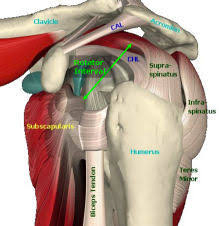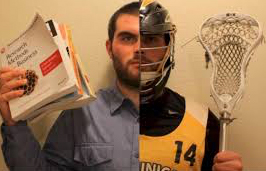Written by Nick Lacey on July 29, 2019 |

The rotator cuff interval (RI) is a critical area of the shoulder composed mostly of ligamentous tissue, as well as the long head of the biceps tendon. This area helps to stabilize the shoulder in the glenoid socket against forces that push the shoulder posteriorly or pull the shoulder down inferiorly. Common injuries that limit movements, such as shoulder impingement, rotator cuff muscle damage, and frozen shoulder may also involve the rotator cuff interval.
Continue Reading »
Written by Nick Lacey on July 24, 2019 |

What we know
- Repetitive concussions may have serious consequences over a lifetime
- Consecutive concussions prior to resolution of previous concussion may have detrimental long-term effects
- Called Secondary Impact Syndrome
- Most Concussions do not involve loss of consciousness
- Many concussions go unreported, increasing the risk of repeated traumas
- Youth injuries (5-14) are most often sports/bicycle accidents
- Children and adults experience the same post-concussive symptoms (DeMatteo, 2015)
Symptoms-Headache (71%), Distractible (57%), Memory Dysfunction, Dizziness (55%), Fogginess (53%), Sensitivity to light, Fatigue (50%), Blurred vision.
Youth Legislation
- H.R. 469 (2011) protects student athletes from concussions.
- Each state required to develop a standard plan for concussion safety
- All states have sports concussion laws as of 2014
Return to Play Protocol-Zurich Method
- Student athlete needs to return to the classroom first!
- One stage per day minimum without recurrence of symptoms
Stage 1-Cognitive rest-No TV, texting, computer. Resting stage until symptoms are free (at least 1 week.)
Stage 2-Stationary bike, TM (10-15 mins), low level activity
Stage 3-Mod exertion, more running drills. Sport specific activity.
Stage 4-At least 30 mins continuously, more cognitive load. Weight training.
Stage 5-Allowed contact in practice for the first time.
Stage 6-Has to be cleared by the physician before returning to game activity.
Current Multiple-Concussion Return to Play Guidelines
- Positive neuroimaging for 2 or more concussions= 3 months off contact sport
- 2 concussions in 3 months= 6 months off contact sport (From latest injury)
- 3+ concussions in 1 year=1 year off sport and retirement consideration
References
- www.Vestibular.org
- https://www.congress.gov/bill/112th-congress/house-bill/469
- Field, M, Collins, MW, Lovell, MR, Maroon, J. Does age play a role in recovery from sports-related concussion? A comparison of high school and collegiate athletes. J Pediatric. 2003;142:546-553.
- Toledo, E, Lebel, A, Bercerra, L. The young brain and concussion: imaging as a biomarker for diagnosis and prognosis. Neurosci Behav Rev. 2012;36:1510-1531
- DeMatteo, Carol et al. Development of a Conservative Protocol to Return Children and Youth to Activity Following Concussive Injury. Clinical Pediatrics. 2015 54(2) 152-163.
- Leddy J et al. A Preliminary Study of Sub symptomatic Threshold Exercise Training for Refractory Post-Concussion Syndrome. Clinical J of Sport Med 2010
- Burke, C. Stony Brook Neuro Concussion Assessment, 2017



